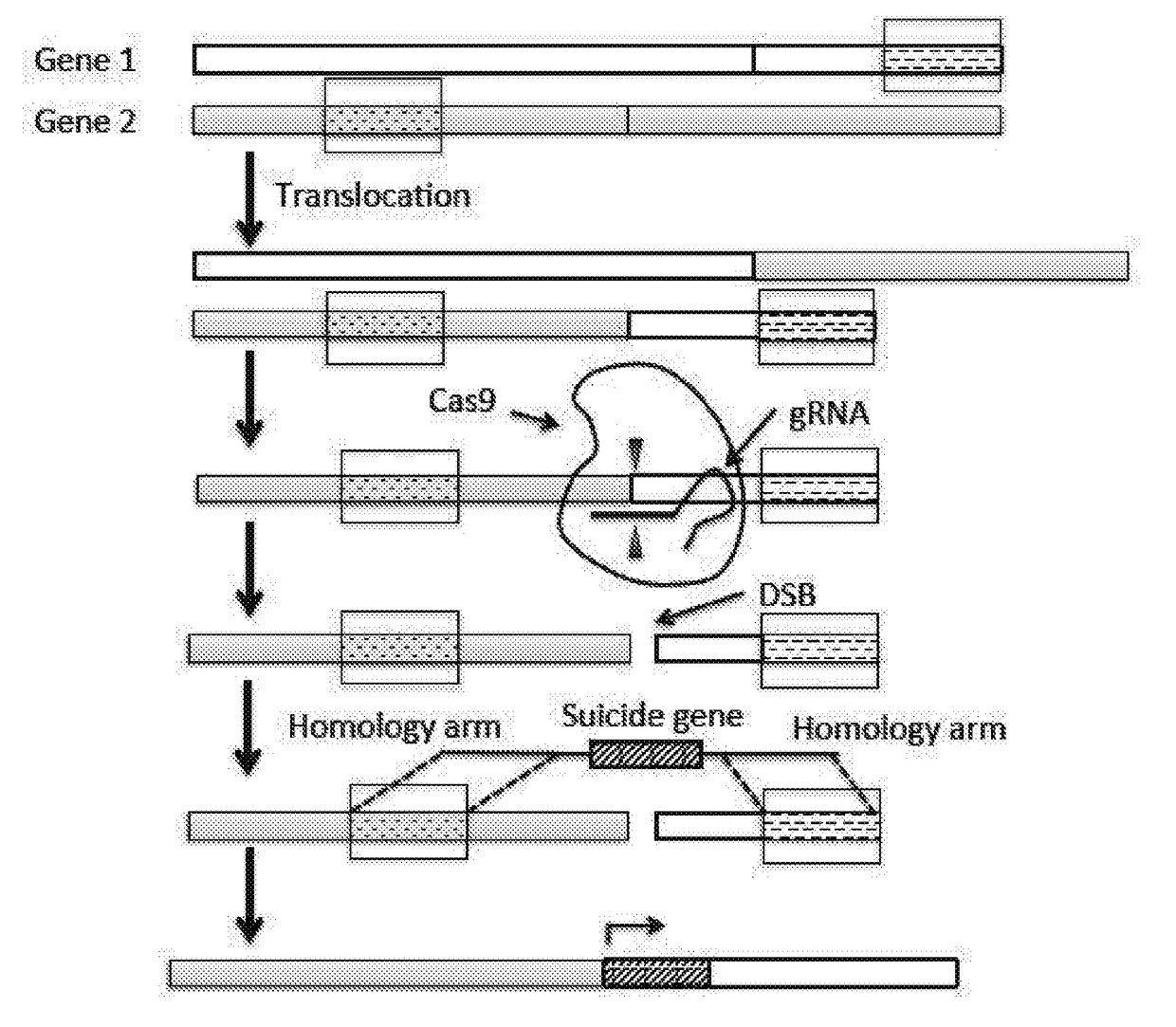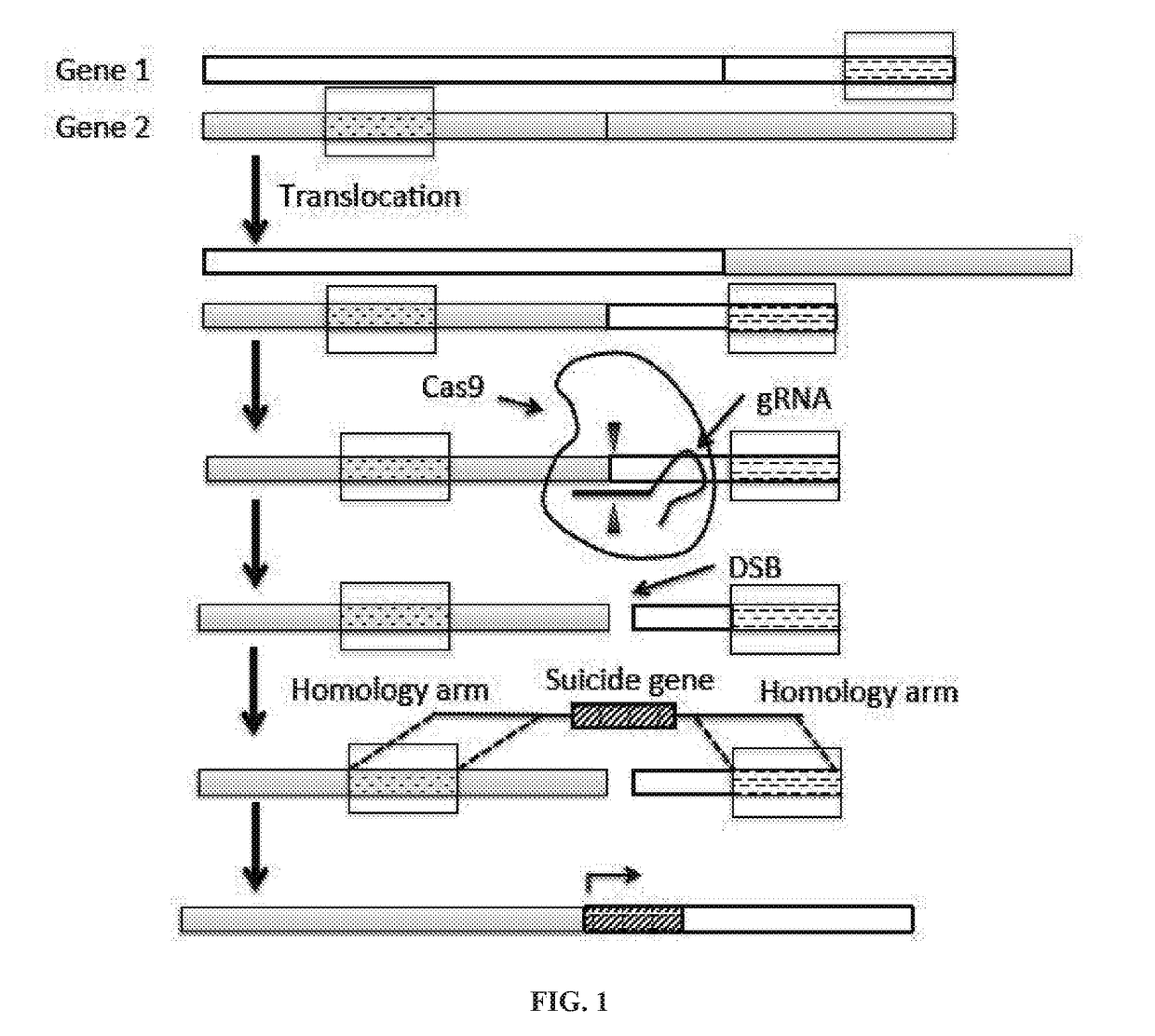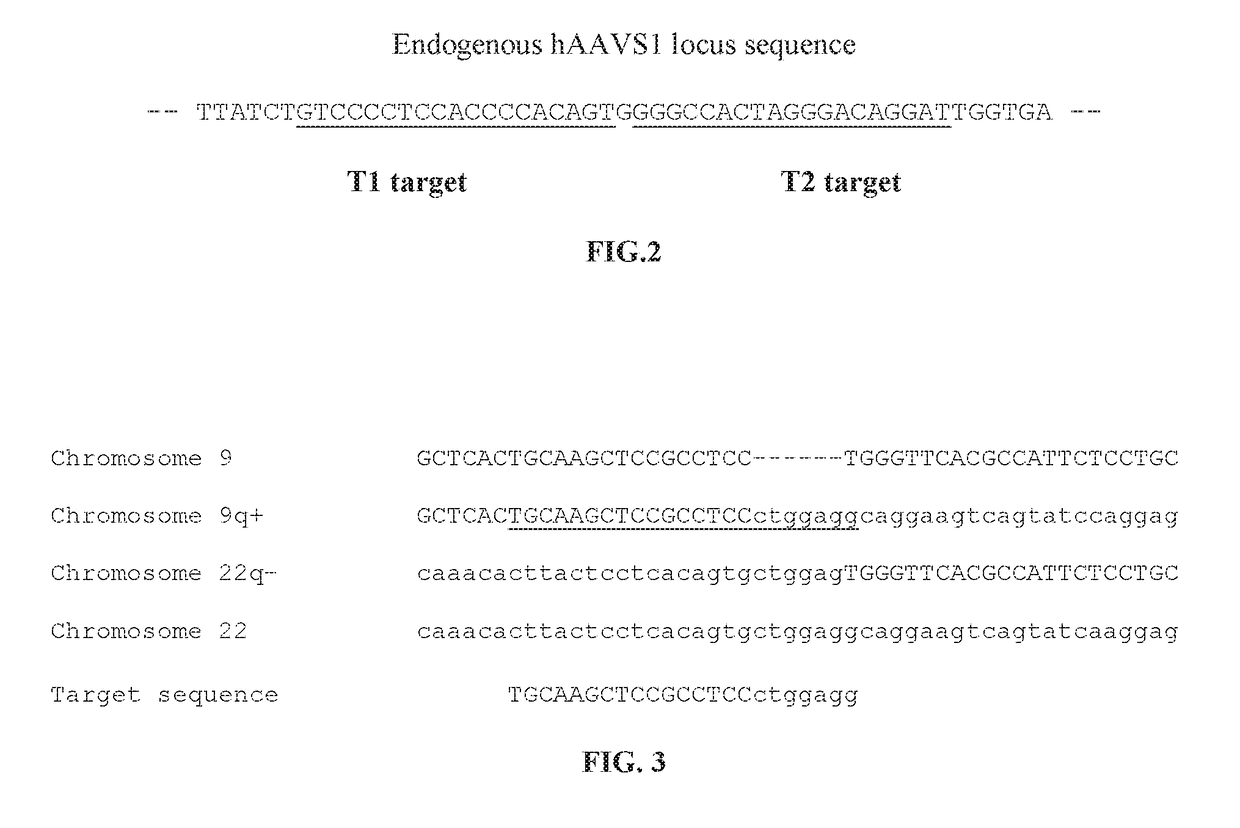Methods and compositions for selectively eliminating cells of interest
a cell and cell technology, applied in the field of selective cell elimination, can solve the problems of multiple side effects of cancer patients undergoing current systemic therapies
- Summary
- Abstract
- Description
- Claims
- Application Information
AI Technical Summary
Benefits of technology
Problems solved by technology
Method used
Image
Examples
example 1
[0088]The following is an example of inserting a suicide gene to a target sequence in a cell to induce cell death.
[0089]To test the functionality of the strategy disclosed in the present application, HSV-TK is integrated to the AAVS1 (adeno-associated virus integration site 1) locus located in the PPP1R12C gene on chromosome 19 in HEK293T cells.
[0090]Preparation of Cas9 and gRNA Expression Construct
[0091]Plasmid pX330 that contains two expression cassettes, a human codon-optimized S. pyogenes Cas9 expression cassette and a U6 promoter driven cassette expressing a single guide RNA, is obtained from Addgene (ID No: 48140). DNA sequences encoding a guide RNA against two Cas9 target, T1 and T2 (see FIG. 2), are cloned into the guide RNA expression cassette of the pX330 plasmid, respectively (see Ran et al. (2013) Genome engineering using the CRISPR-Cas9 system, Nature Protocols 8, 2281-2308).
[0092]Preparation of Targeting Plasmids Containing HSV-TK Gene
[0093]Targeting plasmids containin...
example 2
[0100]The following is an example of selectively eliminating cells of interest. In this example, HSV-TK gene is inserted to cells containing protospacer sequence and induces the cell death.
[0101]The cell inserted with the GFP gene as disclosed in Example 1 also contains at the downstream of the GFP gene a protospacer 2 sequence (SEQ ID NO.: 5), which is used in this Example for inserting a suicide gene. Guide RNA is designed according to the protospacer 2 sequence and inserted to the pX330 vector to generate the CRISPR plasmids pX330-p. The targeting vector is constructed as disclosed in Example 1 and contains a HSV-tk gene flanked with a 5′ homologous arm consists of GFP gene and the same 3′ homologous arm as being used in Example 1. As a result, if the target vector is inserted through homologous recombination, the GFP expression would not be disrupted.
[0102]To show selective elimination of cells containing the protospacer sequence, HEK 293T cells with GFP-protospacer sequence ins...
example 3
[0103]The following is an example of eliminating cancer cells in a subject of Philadelphia positive acute lymphoblastic leukemia (ALL).
[0104]The most common chromosomal aberration observed in adult ALL is the translocation t(9;22)(q34;q11). The breakpoint junction fragments from the DNA of one patient was characterized by cloning and restriction mapping (Nucleic Acids Res. January 1989, 17(1):1-10). The junction was localized in the intron of ABL between exon Ia and the common exon (a2). The breakpoint on the chromosome 22 was located in the first intron. The sequence surrounding the junction was determined (FIG. 3) and analyzed using a CRISPR gRNA design tool (DNA2.0). A potential guide sequence was identified (FIG. 3).
[0105]The blood sample of the subject is obtained. The sequence surrounding the breakpoint junction is characterized by PCR and sequencing. A guide sequence is designed based on the sequence surrounding the breakpoint junction. The guide sequence is cloned into an ad...
PUM
| Property | Measurement | Unit |
|---|---|---|
| length | aaaaa | aaaaa |
| degree of secondary structure | aaaaa | aaaaa |
| Gibbs free energy | aaaaa | aaaaa |
Abstract
Description
Claims
Application Information
 Login to View More
Login to View More - R&D
- Intellectual Property
- Life Sciences
- Materials
- Tech Scout
- Unparalleled Data Quality
- Higher Quality Content
- 60% Fewer Hallucinations
Browse by: Latest US Patents, China's latest patents, Technical Efficacy Thesaurus, Application Domain, Technology Topic, Popular Technical Reports.
© 2025 PatSnap. All rights reserved.Legal|Privacy policy|Modern Slavery Act Transparency Statement|Sitemap|About US| Contact US: help@patsnap.com



